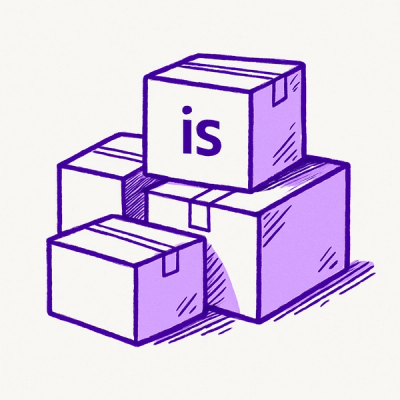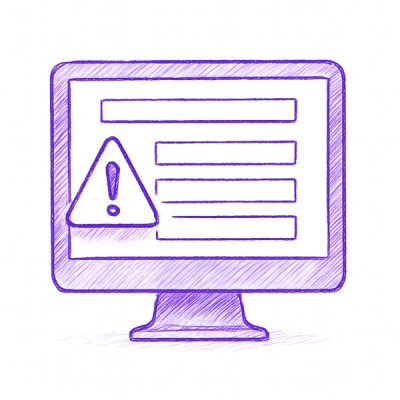
Security News
npm ‘is’ Package Hijacked in Expanding Supply Chain Attack
The ongoing npm phishing campaign escalates as attackers hijack the popular 'is' package, embedding malware in multiple versions.
Free trial Web Unblocker - an AI-powered proxy solution that can bypass even the most sophisticated anti-bot systems.
Web Unblocker is an AI-powered proxy solution capable of bypassing sophisticated anti-bot systems.
Web Unblocker has the following features:
Execute the following curl command from your terminal:
curl --insecure --proxy unblock.oxylabs.io:60000 --proxy-user "USERNAME:PASSWORD" https://ip.oxylabs.io
The output should be a random IP.
Notice a few things here:
--proxy or x is used for proxy. Here, we use it for the URL of Web Unblocker--insecure or the equivalent -k is required for Web Unblocker to work--proxy-user or -U is used for the proxy user and password. If you don't have one, sign up for a free trial.If you are observing low success rates or retrieve empty content, please try adding additional "x-oxylabs-render: html" header with your request.
You can find the equivalent python code in getting_started.py:
import requests
proxies = {
'http': 'http://USERNAME:PASSWORD@unblock.oxylabs.io:60000',
'https': 'http://USERNAME:PASSWORD@unblock.oxylabs.io:60000'
}
url = 'https://ip.oxylabs.io'
response = requests.get(url,
proxies=proxies,
verify=False) # disable SSL certificate verification
print(response.text)
One side effect of using verify=False is that you may receive warnings for InsecureRequestWarning.
Add these two lines to suppress these warnings:
from requests.packages.urllib3.exceptions import InsecureRequestWarning
requests.packages.urllib3.disable_warnings(InsecureRequestWarning)
The following is a sample script that scrapes Google search engine results.
import requests
import bs4
keyword = "shoes"
url = f'https://google.com/search?q={keyword}'
request_result = requests.get(url)
soup = bs4.BeautifulSoup(request_result.text, "lxml")
search_headings = soup.find_all('h3')
for info in search_headings:
print(info.getText())
If you run this code with Python a few times, you’ll be blocked by Google.
The easiest solution to bypass all possible bans is to use Web Unblocker. Add the following lines to use Web Unblocker, just like you would use proxies.
proxies = {
'http': 'http://USERNAME:PASSWORD@unblock.oxylabs.io:60000',
'https': 'http://USERNAME:PASSWORD@unblock.oxylabs.io:60000'
}
# Sending the proxy information
response = requests.get(url,
proxies=proxies,
verify=False)
For the complete code, see google_unblocked.py.
If you use Web Unblocker to scrape multiple pages, you may want to maintain the same IP or geographical region.
To use the same IP, send a header X-Oxylabs-Session-Id and use any random string its value.
headers = {
"X-Oxylabs-Session-Id": "aRandomString"
}
response = requests.get(
'https://www.google.com/search?q=shoes',
verify=False,
proxies=proxies,
headers=headers,
)
Instead of using the same IP, you can also rotate the IP from a specific location. To do that, send the header x-oxylabs-geo-location and set its value as a country, state, city, coordinates, or radius.
headers = {
"x-oxylabs-geo-location": "New York,New York,United States"
}
response = requests.get(
'https://www.google.com/search?q=shoes',
verify=False,
proxies=proxies,
headers=headers,
)
For a complete example, see google_location.py
See documentation for more details.
You can add standard or custom headers to the request.
One of the possible use cases is getting device-specific search results.
headers = {
"User-Agent": "Mozilla/5.0 (iPhone; CPU iPhone OS 16_3_1 like Mac OS X) AppleWebKit/605.1.15 (KHTML, like Gecko) Version/16.3 Mobile/15E148 Safari/604.1",
"Accept-Language": "en-US",
}
response = requests.get(url,
proxies=proxies,
verify=False,
headers=headers)
Web Unblockers fully supports rendering. If you want to render a page, add the customer header as shown below:
headers = {
"X-Oxylabs-Render": "html"
}
In this particular example, Google doesn't need rendering. However, this can be used to take a screenshot. Send the same header, but change the value to png.
headers = {
"X-Oxylabs-Render": "png"
}
response = requests.get(
url, verify=False, proxies=proxies, headers=headers,
)
# Save screenshot as PNG file
with open("google_rendered.png", 'wb') as f:
f.write(response.content)
See google_screenshots.py for the complete source code.
This section shows you how to scrape Amazon with Web Unblocker.
We start with a simple script and will add more features.
Examine the code in basic_script.py. First, you will notice that Amazon will not even return a response without a valid user agent.
Second, upon executing the following script a few times, Amazon will block you.
import requests
url = 'https://www.amazon.com/Bose-QuietComfort-45-Bluetooth-Canceling-Headphones/dp/B098FKXT8L'
custom_headers = {
'user-agent': 'Mozilla/5.0 (Macintosh; Intel Mac OS X 10_15_7) AppleWebKit/537.36 (KHTML, like Gecko) Chrome/108.0.0.0 Safari/537.36',
'accept-language': 'en-US,en;q=0.9',
}
response = requests.get(url, headers=custom_headers)
print(response.text)
The easiest solution to bypass all the bans is to use the Web Unblocker.
Add the following lines to use the Web Unlcoker, just like you would use proxies.
proxies = {
'http': 'http://USERNAME:PASSWORD@unblock.oxylabs.io:60000',
'https': 'http://USERNAME:PASSWORD@unblock.oxylabs.io:60000'
}
response = requests.get(url,
proxies=proxies,
verify=False,
headers=custom_headers
)
Once you have the response, you can use BeautifulSoup to extract the product title and price as follows:
soup = bs4.BeautifulSoup(response.text, "lxml")
product_title = soup.find('span', id="productTitle")
price_element = soup.select_one("div[role='radio'] [class='a-price-whole']")
print(product_title.getText())
if price_element:
print(price_element.getText())
For the complete code, see amazon_unblocked.py.
As shown in the Sample Python Script, you cannot scrape Amazon without at least one header—user agent.
Similarly, you can send any other custom header, which will be forwarded to Amazon by Web Unblocker.
url = 'https://www.amazon.com/Bose-QuietComfort-45-Bluetooth-Canceling-Headphones/dp/B098FKXT8L'
custom_headers = {
'user-agent': 'Mozilla/5.0 (Macintosh; Intel Mac OS X 10_15_7) AppleWebKit/537.36 (KHTML, like Gecko) Chrome/108.0.0.0 Safari/537.36',
'accept-language': 'en-US,en;q=0.9',
}
proxies = {
'http': 'http://USERNAME:PASSWORD@unblock.oxylabs.io:60000',
'https': 'http://USERNAME:PASSWORD@unblock.oxylabs.io:60000'
}
response = requests.get(url,
proxies=proxies,
verify=False,
headers=custom_headers
)
For the complete code, see amazon_unblocked.py.
Usually, sending the user agent is enough for web scraping Amazon, as shown in the previous example. If you are still facing problems, you can render the page by sending the header X-Oxylabs-Render:
custom_headers = {
"X-Oxylabs-Render": "html"
}
#...
response = requests.get(url,
proxies=proxies,
verify=False,
headers=custom_headers
)
The rest of the code remains the same.
See amazon_rendering.py for the complete code.
Using the x-oxylabs-geo-location parameter value for Amazon pages will yield a result with a corresponding delivery preference setting.
You can use this parameter to get correctly-localized Amazon results in a few ways. For most Amazon domains, you can send a zip/postcode or a 2-letter ISO 3166-1 alpha-2 country code.
Note that this is different from scraping Google, where you cannot specify zip but instead can send a City. See documentation for more details.
headers = {
"x-oxylabs-geo-location": "11001" #New York ZIP
}
response = requests.get(
url,
verify=False,
proxies=proxies,
headers=headers,
)
You should now be able to scrape Google and Amazon with Web Unblocker. We have provided many examples in the amazon and google folders.
Learn more about Web Unblocker.
If you face any problems, reach out to support.
FAQs
Free trial Web Unblocker - an AI-powered proxy solution that can bypass even the most sophisticated anti-bot systems.
We found that web-unblocker demonstrated a healthy version release cadence and project activity because the last version was released less than a year ago. It has 0 open source maintainers collaborating on the project.
Did you know?

Socket for GitHub automatically highlights issues in each pull request and monitors the health of all your open source dependencies. Discover the contents of your packages and block harmful activity before you install or update your dependencies.

Security News
The ongoing npm phishing campaign escalates as attackers hijack the popular 'is' package, embedding malware in multiple versions.

Security News
A critical flaw in the popular npm form-data package could allow HTTP parameter pollution, affecting millions of projects until patched versions are adopted.

Security News
Bun 1.2.19 introduces isolated installs for smoother monorepo workflows, along with performance boosts, new tooling, and key compatibility fixes.